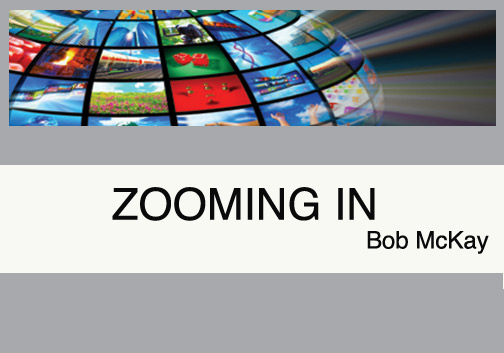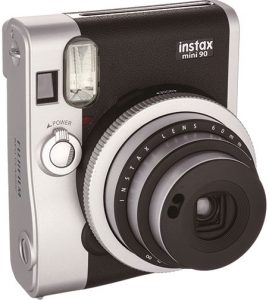
You’ve got to admit that our industry is in a perpetual state of flux. So much so that it got me looking for a dictionary definition of flux. Alas, Merriam-Webster.com spake thus in the first instance: a flowing of fluid from the body, such as a: dysentery. Charming, I said to myself, charming!
In 1989 (or was it 1990?) while at Vivitar, I was taken to see a digital camera company called Dycam. It was situated only a few miles from us in Los Angeles, California. Dycam was a flux leader, for sure. Its camera specifications were, by today’s standards, laughable. But in those days, they were miraculous.
Now, in less than three decades, we are at the point that high-resolution cameras, mostly in the form of the then-undreamed-of smartphone, are approaching ubiquity. Even the most trivial events are being recorded and distributed, making billionaires out of some, criminals out of many, and idiots out of others. But photography is loved as never before.
In the interim, the imaging industry has perhaps reflected the second and third definition of flux—2: a continuous moving on; and 3: a continued flow. We have been bombarded by change, some brands withering on the vine (Kodak?) and others shooting up from out of nowhere (GoPro, Apple) to become generics. In between some brands, such as Beijing’s iago, were just a blip on the radar (despite one massive display at a CES involving a McLaren Formula 1 race car), while others such as Australia’s Memjet had to do a swift policy transmogrification to prosper.
In China, as that country marched relentlessly forward to economic domination, brands such as YI (in cameras) and Oppo (in smartphones) popped up as if out of nowhere. The Wall Street Journal recently named a Chinese company called Hangzhou Hikvision Digital Technology as the world’s biggest maker of security cameras! But there is also a stigma of mistrust that many countries are now verbalizing regarding security issues, especially as to whether Hikvision cameras mimic the famous extraterrestrial film figure ET and phone home (…oceans of data as to what their cameras are seeing and hearing).
Phoenix Rising
Japanese camera makers are showing amazing versatility and lateral thinking by continuing to dominate the traditional camera arena. In addition, such European brands as Leica and Hasselblad are demonstrating terpsichorean prowess hitherto perhaps undreamed of.

One phoenix rising out of apparent ashes is the instant print category, led by Fujifilm and The Impossible Project (which has the duty to rename itself as The Improbable Project methinks in the light of its apparent success, however is now rebranded as Polaroid Originals). These two are leading the charge in reinvigorating analog photography.
FYI: FPI
As an interesting (I hope) sidelight, let us ponder film plane integrity perchance. Let’s call it FPI for a while. FPI is a measure in film cameras of how flat the film in the receiving frame is being held by the camera.
Digital cameras have the equivalent of perfect FPI; long-dead 126 cameras had lousy FPI and thus only needed relatively slow lenses (e.g., the Rollei 126 camera). Instant cameras have a similar restriction. For example, the Leica Sofort instant camera only sports an f/12.7 lens; however such a slow lens makes an autofocus system have an easier job to do. Fujifilm’s Instax instant film is the market leader, but ZINK is making inroads.

Check out MiNT Camera of Hong Kong on Google to see another facet of this segment. And of course there is the irrepressible Lomography and its host of analog and instant print cameras! Indeed, even Kodak is making a run in the analog category with its new Printomatic instant print camera. Who knew we’d be discussing analog photography at CES 2018?
Mirrorless Reflections
Moving along with the flow, the mirrorless interchangeable-lens digital camera was previewed and pondered at the 2004 photokina. In those far-off days, the iPhone revolution was yet to appear. Several majors were shown the mirrorless prospectus by Microvision, but it took many moons—and the creation of better eye-level electronic viewfinders—for the idea to take hold.
The resulting stampede has upended the digicam category, perhaps threatening the dominance of the SLR someday. And it is gaining steam among first-time ILC photographers to expand the category. Along with it, it is creating new markets in accessories and lenses specifically for mirrorless cameras. Flux at its best!
Lights, Cameras, Action
I lived in Hong Kong for 16 years; my two sons were born there. I have a soft spot for China and its people. Many Chinese companies have a special talent for, shall we say, drawing inspiration from the original ideas of others. Nowhere is this more apparent than with action cameras, which were popularized by GoPro.

Now Amazon offers GoPro knockoffs at a fraction of the price of the original. Yet GoPro’s founder was able to sell $6+ million worth of shares recently. While he was somewhat immune from the flattery, it looks like it has now caught up with him. His company is now restructuring.
Another creator mostly forgotten is iPix, maker of the Photo Bubble—the result of two spherical cameras sitting back-to-back and capturing the entire environment. The company’s bubble burst (partly because imaging chip resolutions in those days were too low), and the IP was obtained by Sony and passed on to Ricoh (yes?) who’s now reaping the benefits from iPix’s pioneering 360º work. Now it seems everyone wants a piece of the 360º arena. Another healthy sign for this industry.
Let’s face it, we’re no longer just in the camera business; we are in the image capture/manipulation/storage/display/etc. biz. Most of us take far more images than we can sensibly handle . . . or find when we need them. Most of us do not manipulate the image after capture, but those who do have created a nice little niche for a few smart companies to profit from. We now also have the best image viewing devices in history: high-resolution TVs and monitors, and prices are dropping. There are so many more opportunities for the industry to educate consumers on what to do with their vast image collections, and to monetize those collections.
Enter Crystal Ball
“But what of the future?” I hear you cry. If I knew that exactly, I would not be sitting here bashing out magazine articles. OK, I’ll take a stab at it.
1) People love smartphones but they cost a bundle. How about a camera of that shape, using those lenses, sensors, etc., but which would only connect to the Internet by a cable or a memory card? Nobody offers that. But billions of us like the portability and flat shape of a smartphone, so we would gladly carry a camera of that ilk. Personally I leave my bridge-camera-shaped (and bulked) digicam at home almost all the time. The higher goes the resolution of the imaging chip, the less need there is for zoom lenses. But of course we’d soon reach a limit related to the wavelengths of light.
2) Maybe we are overdoing it when it comes to chip resolution anyway? How many people view their images on an HDTV or 4K HDTV? Or even just on a laptop or computer monitor? How few people bother to do post-capture image manipulation? Should we offer cameras designed just for such viewing only? Sort of a digital 126 camera!
3) There’s much opportunity in this new love affair with photography. I see great success for companies that can monetize the trillions of images we’re taking and coax phoneographers to see the benefits of the amazing new digital cameras the imaging industry continues to create.





